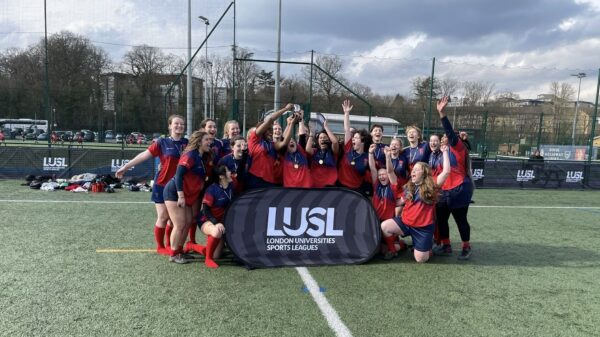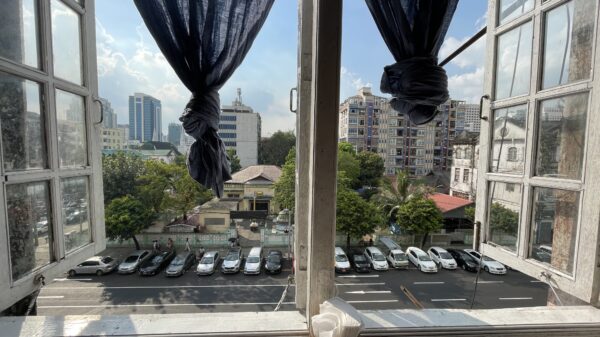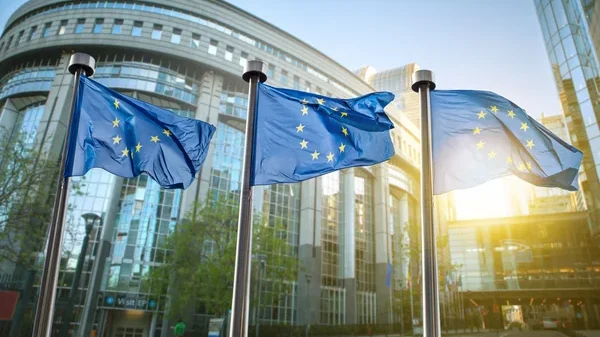Roar writer Shaheena Uddin on the EU’s ruling to ban religious symbols in the workplace and their personal experience of the joys and struggles of wearing a hijab.Â
On 15 July, 2021, the European Supreme Court ruled that “a prohibition on wearing any visible form of expression of political, philosophical or religious beliefs in the workplace may be justified by the employer’s need to present a neutral image towards customers or to prevent social disputesâ€.
The court stated, “However, that justification must correspond to a genuine need on the part of the employer and, in reconciling the rights and interests at issue, the national courts may take into account the specific context of their Member State and, in particular, more favourable national provisions on the protection of freedom of religionâ€.
This verdict was passed after two separate cases were brought forward to the Luxembourg court by two women in Germany. Each was suspended from their jobs due to their choice of religious clothing – the hijab. The first woman worked in a pharmacy, whilst the other worked in day-care.Â
This is not the first time the EU has attempted to police religious garments such as the hijab. They passed a similar ruling in 2017 and this latest policy comes only to solidify the first. This new update has once more reignited public outrage and backlash.
The #HandsoffmyHijab campaign, created by social-media influencer Rawdah Mohamed, was first born after France proposed the stance to ban hijabs for under-18s earlier this year. It’s not going too far to say that France has been notorious for its Islamophobic law-making in the past.Â
Previously in 2011, France banned the face-covering veil (known as the Niqab or Burqa) because not being able to identify one’s face seemed threatening or dangerous at the time. This seems highly ironic in foresight considering that now everyone across the globe has been legally obliged to wear face masks at various points due to the pandemic for the exact opposite reason: protection and safety.
In 2016, France also forbade the “burkini†(an Islamic form of swimwear, not too dissimilar to a wet suit used for surfing). As a hijabi myself who loves to swim and has often worn the said swimsuit in question, I can vouch to say it’s absolutely harmless. Yet the fact that we even need to prove such a claim for a garment used for recreational leisure seems extremely ridiculous in my mind.
The picture for religious expression through clothing carries a similar pattern across Europe. The choice to wear a veil, or in some cases a headscarf for parents simply sending their children to school, can lead to a fine of over 100 euros in places such as the Netherlands, Belgium and Austria.
Many in the court also cited the symbol of the cross as a religious necklace that has been banned, arguing that the new ruling is not specifically discriminatory to the Islamic faith alone. While this may be true it should be of no surprise that the policy disproportionally impacts Muslim women. Unlike the cross, the hijab is not something that can easily be taken off or removed to create a “neutral†workspace. For many Muslim women, it represents a hugely intrinsic part of their faith and identity. The same applies to those who choose to wear a turban (in Sikhism) or a yarmulke (in Judaism).
As someone who has lived wearing the hijab every single day for around 7 years now, I’m personally impacted by this topic, because I have experienced both the blessings and struggles of wearing a religious garment in public. I think understanding the reason why women choose to wear the hijab in the first place would help alleviate some of the many misconceptions that went into shaping this European Union ruling. While every Hijabi has a different and unique story, I’m willing to be raw with Roar and share mine.
Like many Muslim women my age, I made the choice to wear the hijab in my teenage years. Contrary to popular belief, it wasn’t pressured upon me by my parents or some male relative though, it was a decision I came to entirely on my own. As someone with a close relationship to my religion and faith, I did the research and found it to be a fard, a religious obligation. The reasons which drew me to the hijab were therefore simple – as a form of worship in pursuit of reward.Â
One of the many beauties behind the hijab in my experience of it was that once people got past the whole head-covering thing and finally digested that, yes I am in fact Muslim, it trained others’ to judge me for what’s on the inside. My personality, thoughts and passions shone through as opposed to my exterior appearance or looks. I personally have grown to love wearing the hijab and it’s an integral part of my identity and my faith. It’s not something I would be able to easily part with based on some new law or regulation.
My journey with a hijab wasn’t always easy though, of course, there were hard times, where I had to quite literally fight to keep it on. As someone who happened to attend a Church of England school at the time, it wasn’t exactly an easy transition. The first thing I quickly became aware of was just how much wearing the hijab made me stick out like a sore thumb. Fitting in at high school was hard enough as it is, let alone being the only full-time hijabi in my year.Â
I immediately felt the spotlight on my head as one of the only visible and “practising†Muslims and I was constantly faced with a barrage of questions from classmates and teachers alike. Regardless, as an unwitting people-pleaser, I placed so much unnecessary pressure on myself to be the best representation of Muslims I could be. I felt like I wasn’t allowed to just be myself, because I was too busy striving to prove myself as the “model minority†student, whilst fighting back against all the media stereotypes placed upon me.
It sounds silly now but a simple piece of garment on your head can really change the way people perceive you and sometimes it even exposes other people’s true colours. I lost “friends†over it at some points. People who I thought would understand, made fun of me for “looking like a nun†or laughed when I told them because they assumed I would “be wearing a turban†to school. Why either of those religious garments, clearly not even from my religion at all, was deemed something to mock is beyond understanding. For me looking back with hindsight now, these microaggressions and literal playground behaviour seem to be a microcosm representative of the wider ignorance, hate and islamophobia directed towards Muslims today.Â
For me personally, taking the hijab out of the equation entirely would be merely playing into exactly what the islamophobes wanted from me – to look and be more like them. Sure it would be easier, but it also would not be sticking true to who I am and what I believe in. Comparing the hijab to a more optional and flexible religious symbol such as the cross also just disregards all my experience and struggles with keeping the hijab on in the first place. The experiences of wearing both of these religious symbols are vastly different, considering the hijab is far more visible in the public eye and has to deal with greater consequences in terms of racism and islamophobia, whilst the cross can easily be hidden under clothing. Grouping both symbols under one ruling, whilst not considering the meaning and nuances of each individually, is problematic to both religious identities.
The main problem lies in forcing people to choose between their religion or their career. In most cases, this new ruling will simply be forcing Muslim women out of the workforce entirely. How is it fair to force someone to negotiate the impossible, whilst separating parts of themselves such as personal beliefs and national politics? Leaving the decision up to the employer only paves the way for legalised discrimination in the workplace to take place en masse.
Don’t just take my word for it though. Roar also spoke with several KCL students and this is what they had to say on the ruling.
One KCL Humanities student shared their thoughts – “This is clearly discrimination as it primarily targets hijab, turban and yarmulke wearers. How does wearing such an item of clothing in any way negatively affect others? If people are peacefully expressing their religion, especially as they’re not impacting others, that’s their right and they should be allowed the freedom to do so, they should not be oppressed. Living in the West in a liberal democracy, it’s actually shocking, outrageous and goes against everything the West stands for when infringing on minorities’ rights.â€
They then went on to explain how this ruling would impact them directly: “I wear the hijab so I would have to avoid places of work that would be oppressive towards me and not allow me to wear it, which would further exacerbate the vicious BAME attainment/employment gap.â€
Another student responded that “Being able to practice our religion is a basic human right. By banning hijabs, turbans, yarmulkes and any other religious clothing we’re unable to practise our religion in peace. This is a rule fuelled by racism and xenophobia and should have never gone up to the supreme court. Action must be taken.
“It affects me as I am an EU citizen and also wear the hijab. It will affect millions of lives and people will face several struggles having to fight between pleasing their company to earn a living or practising their religion.â€
Sarah, a KCL student, expressed that the “Freedom to practice your own religion is a basic human right! Therefore taking away this freedom is dehumanizing and utterly disgraceful… I’ve been wearing the hijab since I was 8 years old and I’m not taking it off for some law, even if it means I can’t work! The ban on religious attire isn’t going to make Muslim women take their hijabs off, it’s just going to make them stay at home because a hijab isn’t like wearing a cross or a string of prayer beads, it’s a full image of modesty that also includes wearing loose clothing and acting in a specific manner. We shouldn’t be trying to ‘promote neutrality’, this is a step backwards. Instead, we should be trying to promote diversity.â€
Tara, a postgraduate student, asked the poignant question: “What is neutrality? POC can never be neutral because we are visibly different. This will only be used to exclude non-Christians from the workplace.â€
Another student expressed that “whilst most Muslims do wear these clothing for religious purposes, some do not. For some, it’s a style or a culture. I don’t think it’s fair to ban it just because it’s a religious symbol and could disrupt the ‘neutral’ image of companies, for example. I think freedom of expression/religion means being able to wear what you want. This ruling goes against that in my opinion.â€
KCL student, Hamaaida, expressed – “First of all, ‘neutrality’ in the workplace isn’t guaranteed. It isn’t just religion that makes us different. When you are accommodating other differences then why is religion being targeted? Simply providing a ‘neutral’ environment says you don’t need to be too tolerant of others beliefs, we’ll delete them out for you. This is a new form of communism that doesn’t provide a neutral environment but restricts humanity at large. Respectfully accepting differences is what life and living in a society is about.â€
A KCL medical student said the following – “Religion is a very important factor in many people’s lives and should be respected. I do not agree with policing people’s clothing as it is unnecessary and can be harmful especially for people who practice a religion that guides them on how to live their everyday lives, including how they should dress. Furthermore, it’s a form of discrimination because it’s targeted towards people of particular religions while people who are secular are free to wear whatever they want.â€
Another student raised the excellent point that “You know non-Muslims always have those ridiculous stereotypes about us that we’re oppressed by Muslim men who don’t give us any freedom – the irony is they are literally oppressing us by not giving us the freedom to work as we wish and are taking our right to choose the way about how we present ourselves!â€Â A student in the English department mirrored this sentiment, telling Roar: “They’ll frame this as progressive when it’s just another example of taking away women’s freedoms and it speaks volumes on how there is no Muslim female representative in the EU to speak on their own issues.â€
Another student summed up these thoughts well: “Blatant misogyny and Islamophobia, they’re not even trying to hide it at this point.â€
“If you need to prevent ‘social disputes’ by limiting Freedom of Expression, your clientele are the issue not the employees. Neutral Image? Your brand image really needs sorting if you think your supposed neutrality (read closeted racism) is threatened by someone wearing a cross or a hijab. Rip diversity stock photos, oh wait you’ll still use them for your gain to seem ‘woke’.”
Finally, I’d like to leave you with the words of prominent journalist Johana Bhuiyan:
My hijab isn’t making you uncomfortable, your racism and xenophobia is making you uncomfortable with my hijab. https://t.co/z1n735lJe2
— Johana Bhuiyan (@JMBooyah) July 15, 2021

















